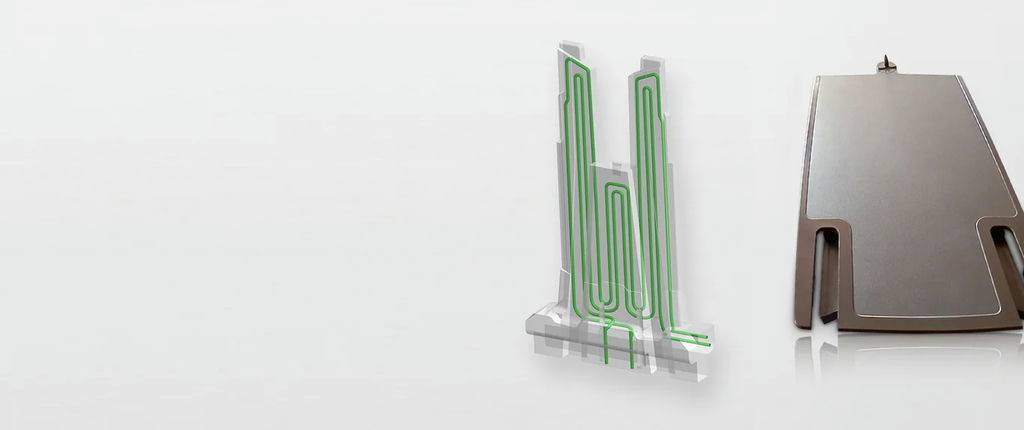“EOS Technology – EOSINT M 270, enabled us to manufacture an extremely durable component, while at the same time successfully retaining the proven advantages of the method in terms of design and reduced cycle times,”
Luboš Rozkošný, CEO – Innomia.
The manufacture of the plastic components for the central armrest is undertaken by the supplier Magna – a customer of Innomia. The heat energy of the liquid base material needs to be dissipated throughout the manufacturing tool to enable the plastic to solidify. The cooling process dictates, amongst other things, the quality of the component. This is because irregular heat dissipation can lead to deformations.
As a logical consequence, the designers from Innomia began to develop a new tool insert cooling system. The optimized removal of heat generated in the production process was right at the top of the list of priorities.
The team decided to go with integrated precision cooling channels, a tried and tested application under DMLS technology, and one of the solutions that only Additive Manufacturing processes can provide. The EOSINT M 270, a system proven over many years, was deployed for Innomia.
The precision cooling and the production using Additive Manufacturing technology has had the desired results. The temperature distribution and associated heat dissipation are now substantially more homogenized. Since the heat is distributed and leaves both the tool and the component quicker, a water temperature of 60 °C is sufficient for cooling – reducing the energy needed. The insert surface itself does not heat up beyond 90 °C, a fact that further allowed the engineers to resolve the humidity problems in the surrounding area.
Thanks to Innomia and EOS technology, Magna profits from a maintenance interval that is extended to between five and six weeks. The problem of air humidity condensation and potential cavity corrosion was solved completely. The uniform cooling channels work so well that the time required for the production cycle is now 17 % lower than before.
“The issue of cooling was something that we’ve been trying to deal with for a long time. We knew how an improved product would have to look, but manufacturing it just wasn’t possible. Additive manufacturing allowed us to make the breakthrough. We were able to plan the cooling channels just as we wanted them and then manufacture the mold core correspondingly. The laser fuses the metallic powder layer by layer, so that in effect any shape is possible. The result has convinced us at every level. Maintenance, quality of the end product, costs, heat dissipation – it’s been the perfect project.”
Pavel Strnadek | Head of Tool Maintenance | Magna
Get your hands on the published case study, right here!
Want to know more about EOS machines?
[fc id=’3′ type=’popup’ button_color=’#e31e25′ font_color=’white’]CLICK HERE[/fc]


